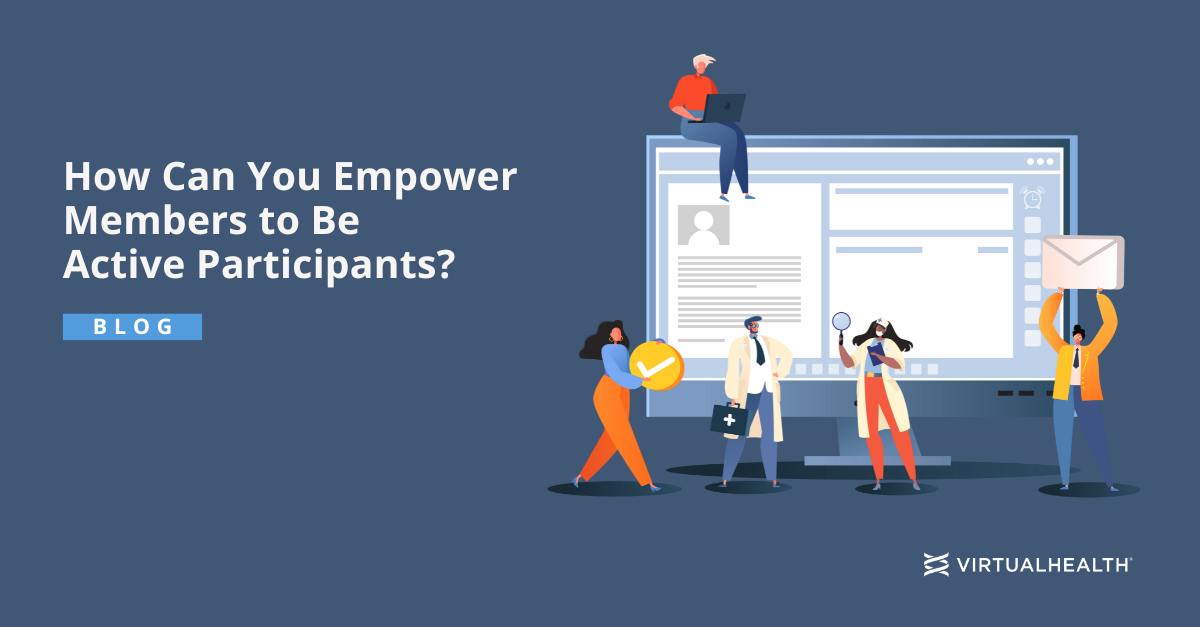When people have the knowledge, skills, and confidence to engage in their own health, better outcomes are much more achievable. According to the Centers for Disease Control and Prevention (CDC), this conclusion was based on a research review that linked better health outcomes to higher levels of activation (having the knowledge, skills, and confidence to be engaged in their health) and health literacy.
Active participation and engagement are also tied to higher satisfaction.
Payers can use these insights to further health outcome goals by taking steps to improve member participation in a few key areas:
- Position care managers to better educate and motivate members.
- Make the healthcare experience as convenient as possible
- Help members to overcome challenges that prevent active participation and engagement in health.
See below for more details about how healthcare plans can empower members to become more activated and engaged, and as a result, improve population health outcomes.
Boost Health Literacy with Personalized, Accurate Education
Improving health literacy can help members feel more confident, ease their fears, and make them feel like they’re at the center of decision-making and care planning.
In fact, according to one study from the American Journal of Medicine, individuals who received education that helped them better understand their condition, disease progression, recommended treatments and coping strategies were substantially more compliant with treatment.
To help better empower members, ensure health education:
- Contains accurate and up-to-date information
- Is relevant to a member’s specific needs
- Available in a format that matches a member’s learning style and health literacy level
- Is easy to understand
Equip Care Managers to Assess and Improve Member Participation
To help members participate in their health, care managers need to spend time building relationships and trust. Authentic dialogue helps care managers to identify and understand the various factors that may influence why a member may or may not be activated. Examples of factors include an individual’s level of health literacy or health-related social challenges they may be experiencing such as food insecurity or access to safe housing or transportation.
Knowing these factors is critical to creating a complete picture of health and properly informing care plan decisions.
One way to equip care teams to do this is by leveraging a connected medical management platform that centralizes patient data across all care settings and utilizes automated alerts and workflows. With a care management solution like this, both providers and care managers can better track emerging risk factors, identify, and implement preventive measures sooner, and track data across events such as emergency room visits.
Built-in automated alerts can help care managers better assess a member’s current level of participation and identify and resolve obstacles to care faster. For example, a connected system with automated workflows and alerts might trigger an alert when a member misses an appointment or fails to pick up medications. The care manager can review the member’s profile and see if it’s time to intervene with a phone call to the patient and/or their provider, for example.
Help Health Plan Members Set Goals and Overcome Roadblocks
Patients are more likely to participate in treatment plans when they have personal goals to work toward, according to Becker’s Hospital Review. Care teams can apply the same concept to supporting members outside clinical settings.
Eating a healthier diet, reducing cholesterol, increasing physical activity, meeting a treatment milestone – whatever a member’s health goal involves, care managers can make them more attainable by identifying obstacles and helping patients navigate them. Here are some other examples:
Sticking to a healthy nutrition plan: Does the patient live far from a well-stocked supermarket? (Or lack the transportation to get there?) Connect them with a food pantry or grocery delivery services available in the community.
Improving medication adherence: Could the patient benefit from a better understanding of how to self-administer medications? Send resources (e.g., how-to videos) or schedule a one-on-one for coaching. Is picking up their prescription a barrier? Help arrange for prescription delivery.
Addressing behavioral or mental health needs: Many patients know that taking care of mental health is an important part of overall health and wellness. But finding a behavioral/mental health professional and following through on appointments is often daunting and time-consuming. Care managers can empower patients to take charge by linking them to community counseling services or facilitating virtual treatment options.
Provide Ongoing Support and Communication to Members
Ongoing support is key to motivating members to meet their goals. It’s important to offer frequent touchpoints in a mix of channels – text, email, virtual visits, in-person phone calls or appointments – to maintain communication about progress and provide encouragement and coaching when needed.
Remote patient monitoring (RPM) devices that help patients track health markers (e.g., heart rate, blood pressure) can also be helpful in motivating patients to keep actively working toward goals. And with HELIOS, RPM data can be ingested and integrated into the patient view for a more real-time understanding of members’ health statuses.
Build Convenience into the Healthcare Experience
Beyond the fact that members want the same ease from healthcare that they’ve come to expect from other consumer good experiences, providing features that drive convenience is also a way to drive member empowerment. Providing tools like telehealth and multiple options for communication and accessing health professionals can make it possible for more members to participate more fully.
Payers (and providers) can make health engagement easier by offering:
- Telemedicine and virtual appointments
- Digital portals for easy access to health information
- Automated appointment scheduling and reminders
- Digital health education content
- Integrations with remote patient monitoring devices
Watch how HELIOS can help payers transform care management programs here.

